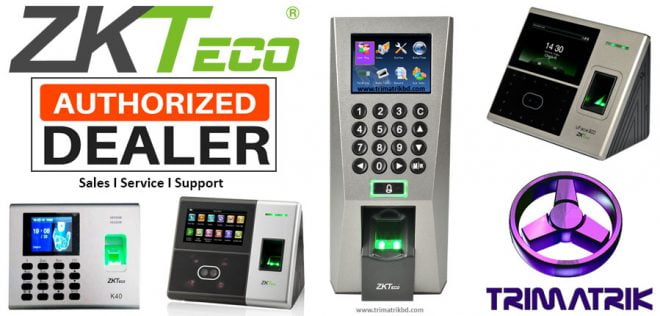TFT Color Screen
standard TFT-LCD display modules are available in various sizes from 1.77″, 2.8″ TFT LCD, 5″ LCD display to 10.4″ TFT LCD. These TFT LCD modules are including options of TFT panel, TFT LCM with controller board, industry standard mono TFT LCM, TFT color display, and wide operating temperatures of -20°C to +70°C or -30°C to +80°C.
Winstar TFT displays are available in various graphic display resolutions including QVGA (320 x 240), WQVGA (480×272), VGA (640×480), WVGA (800×480), 640×320, 1024×600, XGA (1024×768) and WXGA(1280×800). Many of Winstar TFT display modules have more than one interface available including MCU, RGB, TTL and LVDS as well as two touch panels optional in resistive and capacitive technology.
| Display Format | Size (inch) | Outline Dimension (mm) | Viewing Area (mm) | Active Area (mm) | View Direction | Interface | IC Part No. | Control-Board | Brightness (cd/m²) | Recommended | Touch Screen | Detect Points (Finger) | Temperature (°C) |
| 128×160 | 1.77 | 34×45.83 | 31.83×41.42 | 28.03×35.04 | 6H | MCU | ST7735S | No | 500 | ★★ | No | -20~70 | |
| 128×160 | 1.77 | 34×45.83 | 31.83×41.42 | 28.03×35.04 | 6H | SPI | ST7735S | No | 500 | ★★★ | No | -20~70 | |
| 240×320 | 2.4 | 42.72×60.26 | 37.72×49.96 | 36.72×48.96 | 6H | MCU | ILI9341 | No | 500 | ★★★ | No | -20~70 | |
| 240×320 | 2.4 | 42.72×60.26 | 37.72×49.96 | 36.72×48.96 | 6H | SPI | Himax8347-I | No | 500 | ★ | No | -20~70 | |
| 240×320 | 2.8 | 50×69.2 | 44.2×58.6 | 43.2×57.6 | 6H | MCU | ILI9341 | No | 500 | ★★★ | No | -20~70 | |
| 240×320 | 2.8 | 50×69.2 | 44.8×63.1 | 43.2×57.6 | 6H | MCU | ILI9341 | No | 350 | ★★★ | RTP | -20~70 | |
| 240×320 | 2.8 | 50×69.2 | 44.2×58.6 | 43.2×57.6 | 6H | SPI | Himax8347-I | No | 500 | ★ | No | -20~70 | |
| 240×320 | 3.2 | 55.04×77.6 | 50.66×66.86 | 48.6×64.8 | 6H | MCU | ILI9341 | No | 180 | RTP | -20~70 | ||
| 240×320 | 3.2 | 55.04×77.6 | 49.6×65.8 | 48.6×64.8 | 6H | 8080,SPI,MCU | ILI9341 | No | 500 | ★★ | No | -20~70 | |
| 240×320 | 3.2 | 55.04×77.6 | 49.6×65.8 | 48.6×64.8 | 6H | 8080,SPI,MCU | ILI9341 | No | 350 | ★★ | No | -20~70 | |
| 320×480 | 3.5 | 52.96×81.34 | 52.36×76.64 | 48.96×73.44 | 6H | MCU | ILI9488 | No | 320 | No | -20~70 | ||
| 320×240 | 3.5 | 76.9×63.9 | 73.1×55.5 | 70.08×52.56 | 12H | RGB | — | No | 420 | ★★★ | No | -20~70 | |
| 320×240 | 3.5 | 76.9×63.9 | 72.1×54.6 | 70.08×52.56 | 12H | RGB | — | No | 300 | ★★★ | RTP | -20~70 | |
| 320×240 | 3.5 | 76.84×63.84 | 71×53 | 70.08×52.56 | 12H | RGB | HX8238-D00BPD400-A | Option | 340 | ★★★ | PCAP | 5 | -20~70 |
| 320×240 | 3.5 | 76.84×63.84 | 73.1×55.5 | 70.08×52.56 | O-TFT | RGB | — | No | 300 | ★★★ | No | -20~70 |
History
Further information: History of display technology and Thin-film transistor
In February 1957, John Wallmark of RCA filed a patent for a thin film MOSFET. Paul K. Weimer, also of RCA implemented Wallmark’s ideas and developed the thin-film transistor (TFT) in 1962, a type of MOSFET distinct from the standard bulk MOSFET. It was made with thin films of cadmium selenide and cadmium selenide. The idea of a TFT-based liquid-crystal display (LCD) was conceived by Bernard Lechner of RCA Laboratories in 1968. In 1971, Lechner, F. J. Marlowe, E. O. Nester and J. Tults demonstrated a 2-by-18 matrix display driven by a hybrid circuit using the dynamic scattering mode of LCDs.[3] In 1973, T. Peter Brody, J. A. Asars and G. D. Dixon at Westinghouse Research Laboratories developed a CdSe (cadmium selenide) TFT, which they used to demonstrate the first CdSe thin-film-transistor liquid-crystal display (TFT LCD).[4][5] Brody and Fang-Chen Luo demonstrated the first flat active-matrix liquid-crystal display (AM LCD) using CdSe TFTs in 1974, and then Brody coined the term “active matrix” in 1975.[3] As of 2013, all modern high-resolution and high-quality electronic visual display devices use TFT-based active matrix displays.[6][7][4][8][9][10]
Construction
A diagram of the pixel layout
The liquid crystal displays used in calculators and other devices with similarly simple displays have direct-driven image elements, and therefore a voltage can be easily applied across just one segment of these types of displays without interfering with the other segments. This would be impractical for a large display, because it would have a large number of (color) picture elements (pixels), and thus it would require millions of connections, both top and bottom for each one of the three colors (red, green and blue) of every pixel. To avoid this issue, the pixels are addressed in rows and columns, reducing the connection count from millions down to thousands. The column and row wires attach to transistor switches, one for each pixel. The one-way current passing characteristic of the transistor prevents the charge that is being applied to each pixel from being drained between refreshes to a display’s image. Each pixel is a small capacitor with a layer of insulating liquid crystal sandwiched between transparent conductive ITO layers.
The circuit layout process of a TFT-LCD is very similar to that of semiconductor products. However, rather than fabricating the transistors from silicon, that is formed into a crystalline silicon wafer, they are made from a thin film of amorphous silicon that is deposited on a glass panel. The silicon layer for TFT-LCDs is typically deposited using the PECVD process.[11] Transistors take up only a small fraction of the area of each pixel and the rest of the silicon film is etched away to allow light to easily pass through it. Convex Mirror Price Bangladesh is starts from 8500tk
Polycrystalline silicon is sometimes used in displays requiring higher TFT performance. Examples include small high-resolution displays such as those found in projectors or viewfinders. Amorphous silicon-based TFTs are by far the most common, due to their lower production cost, whereas polycrystalline silicon TFTs are more costly and much more difficult to produce.[12]



